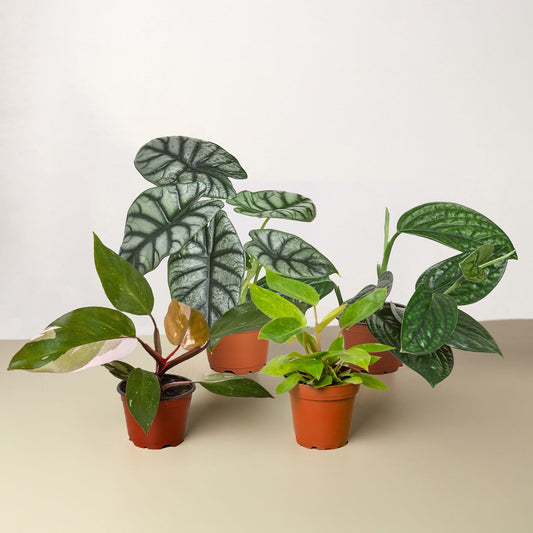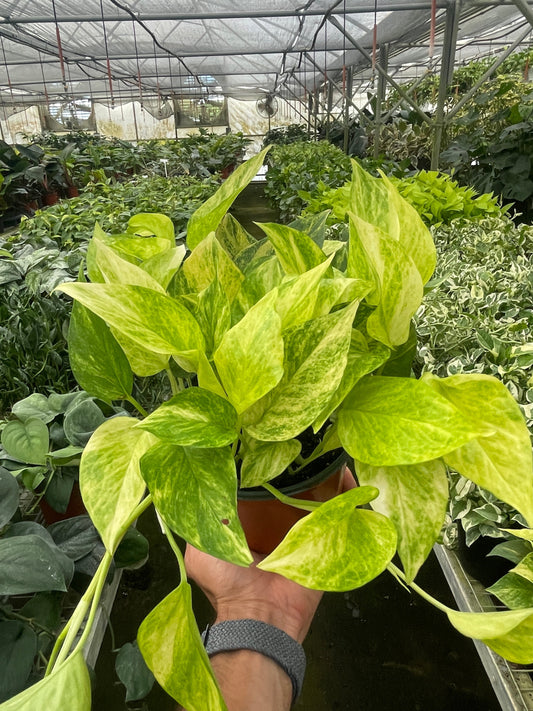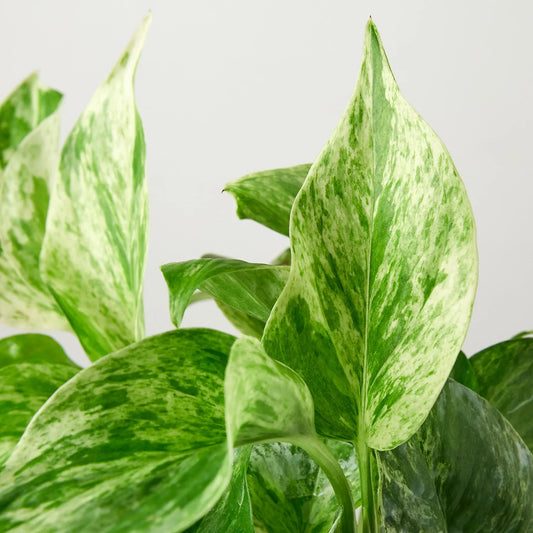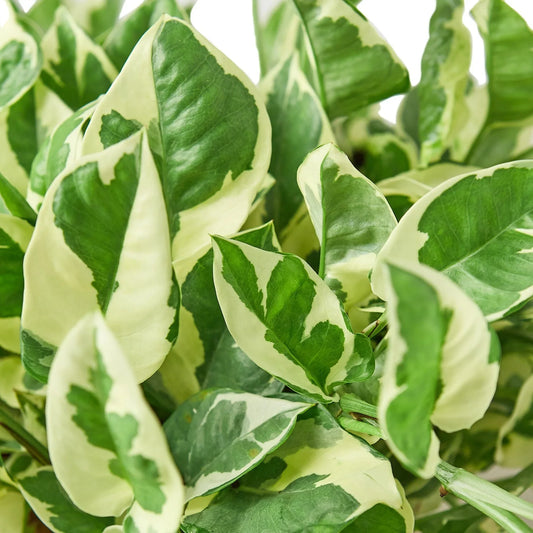How Much Light Does a Bamboo Palm Need?
Cafe Planta Team
Who knew a little green friend like the bamboo palm could make such a difference in your home? With its easy-going nature and lush appearance, it's no wonder this plant is a favorite among plant lovers. But let's be honest, figuring out how much light your bamboo palm needs can feel like a bit of a guessing game.
In this article, we're going to clear up any confusion about lighting requirements for your bamboo palm. We'll discuss everything from the kind of light it thrives in to how to set up the perfect spot in your home. By the end, you'll feel confident that your bamboo palm is getting the spotlight it deserves—literally.
Understanding Bamboo Palm Light Needs
Let's start with the basics. The bamboo palm, also known as Chamaedorea seifrizii, hails from the tropical rainforests of Mexico and Central America. That means it's used to dappled sunlight filtering through a canopy of leaves. Unlike some sun-hungry plants, bamboo palms prefer a more shaded environment that mimics their natural habitat.
So, what does that mean for your home? Ideally, your bamboo palm will thrive in bright, indirect light. This could be a spot near a window where the sun doesn't directly hit the leaves. If you have sheer curtains, even better! They'll help diffuse the light. Direct sunlight, on the other hand, can scorch those beautiful leaves, leading to browning and damage.
But what if your home is lacking in natural light? No worries! Bamboo palms are adaptable and can tolerate low light conditions. Just remember, growth might be slower, and the leaves may not be as vibrant. Consider supplementing with artificial lights if your home is particularly dim.
Finding the Perfect Spot
Now that you know the kind of light a bamboo palm prefers, the next step is finding that sweet spot in your home. Here are a few pointers to help you get started:
- North-facing windows: These windows provide consistent but indirect light, making them a great choice for bamboo palms. You can place your plant a few feet away to avoid any direct exposure during sunrise or sunset.
- East-facing windows: These are another excellent option. The gentle morning sun is perfect for your bamboo palm, offering bright, indirect light without the harshness that comes later in the day.
- West-facing windows: While not ideal, these can work if you place the palm further from the window or use a sheer curtain to diffuse the intense afternoon sun.
- South-facing windows: These are typically the brightest and can be too much for a bamboo palm. If this is your only option, make sure to filter the light with curtains and keep the plant at a distance.
Remember, every home is different, and sometimes it takes a bit of trial and error to find the best spot. Observe how your plant responds and adjust as needed.
Signs of Light Stress
Plants are pretty good at communicating if you know what to look for. Your bamboo palm will show signs if it's not happy with its light conditions:
- Yellowing leaves: This can indicate too much light. The sun might be scorching the leaves, leading them to yellow and eventually brown.
- Leggy growth: On the flip side, if your plant isn't getting enough light, it might become leggy. This is where the stems grow long and thin as they stretch towards a light source.
- Slow growth: While bamboo palms aren't fast growers, extreme sluggishness in growth might suggest insufficient light, especially if coupled with other symptoms.
If you notice any of these signs, try adjusting your plant's location. A little change can make a big difference!
Using Artificial Lighting
What if your home doesn't offer the right natural lighting? Enter artificial lights! These can be a game-changer for indoor gardeners, especially during darker months or in homes with limited window space.
When selecting a grow light, look for ones labeled as full-spectrum. These mimic natural sunlight and provide the range of light your bamboo palm needs. LED grow lights are popular due to their efficiency and low heat output.
Here's a quick guide to setting up artificial lighting:
- Distance: Position the light 12-24 inches above your plant. Too close, and you risk burning the leaves; too far, and the light might not be intense enough.
- Timing: Aim for around 12-14 hours of artificial light daily. You can use a timer to ensure consistency without any extra effort on your part.
- Positioning: Try to mimic natural light as much as possible. Place the lights above the plant to simulate sunlight coming from above.
Artificial lighting can make a significant difference, especially if you're struggling to find the right spot for your bamboo palm.
Seasonal Changes and Light Adjustment
Just like us, plants experience changes with the seasons, and it's essential to adjust their care accordingly. During winter, natural light levels drop, and sun exposure decreases. Your bamboo palm might need a little extra attention during these months.
Consider moving your plant closer to a light source or providing additional artificial light to make up for the shorter days. Remember, though, that bamboo palms are somewhat dormant during winter, so don't expect a burst of growth. Instead, focus on maintaining their health until spring arrives.
In summer, on the other hand, the sun's intensity increases. Even if your bamboo palm is in its usual spot, check to see if the light has become too intense. You might need to pull it back a bit or add a curtain to protect it from direct rays.
Being mindful of these seasonal changes ensures your bamboo palm remains healthy and vibrant year-round.
Combining Bamboo Palms with Other Plants
One of the joys of being a plant parent is creating stunning indoor gardens. Bamboo palms are fantastic companions for other shade-loving plants, allowing you to build a harmonious arrangement without worrying about clashing light needs.
Consider pairing your bamboo palm with these plant friends:
- Snake Plant: Another low-light champ, the snake plant (Sansevieria) can thrive alongside your bamboo palm, adding interesting shapes and textures.
- Peace Lily: Known for its beautiful white blooms and love of indirect light, the peace lily (Spathiphyllum) complements the bamboo palm with its contrasting colors and shapes.
- Pothos: With its trailing vines and heart-shaped leaves, pothos (Epipremnum aureum) is a versatile plant that enjoys similar light conditions.
When arranging these plants, think about the aesthetics and the practical aspects of their placement. Make sure each plant has enough space and light to thrive.
Using Bamboo Palms in Interior Design
Bamboo palms aren't just good for your air— they're also great for your home’s aesthetics. These palms can complement various interior styles, from minimalist to bohemian, thanks to their elegant, feathery appearance.
Here's how you can incorporate bamboo palms into your home decor:
- Accent pieces: Use bamboo palms as focal points in living rooms or entryways. Their graceful foliage can soften lines and add a touch of nature to any space.
- Grouping: Combine bamboo palms with other plants of varying heights for a lush indoor jungle feel. Use different pot sizes and textures to create visual interest.
- Containers: Choose pots that match your decor style. Whether it's sleek and modern or rustic and earthy, the right container can enhance your plant's appearance.
Playing around with placement and arrangements can breathe new life into your home while keeping your bamboo palm happy.
Watering Considerations and Light
Interestingly enough, light and water are closely linked when it comes to plant care. The amount of light your bamboo palm receives can influence how often you need to water it.
In brighter conditions, your palm will likely need more water since it will be growing more actively. However, if it's in lower light, it might use less water. Always check the soil before watering; if the top inch feels dry, it's time for a drink.
Here are some watering tips based on light conditions:
- Bright, indirect light: Water when the top inch of soil is dry. You'll likely need to water more frequently, especially during warmer months.
- Low light: Allow the soil to dry out a bit more between waterings. Be mindful not to overwater, as this can lead to root rot.
By aligning your watering routine with light availability, you can ensure your bamboo palm stays healthy and vibrant.
Common Mistakes and How to Avoid Them
Even with the best intentions, it's easy to make a few mistakes when it comes to light for your bamboo palm. Luckily, these are usually easy to fix with a little know-how.
Here are some common pitfalls to watch out for:
- Placing in direct sunlight: Remember, bamboo palms are tropical plants that thrive under filtered light. Direct sun can cause leaf burn, so always opt for indirect lighting.
- Ignoring seasonal changes: As the seasons change, so do light levels. Adjust your plant's position or lighting setup accordingly to keep it thriving year-round.
- Over-relying on artificial light: While artificial lights are helpful, don't forget to give your bamboo palm some natural light whenever possible. It helps maintain a more natural growth pattern.
By avoiding these mistakes, you can ensure your bamboo palm continues to be a thriving part of your indoor plant family.
Final Thoughts
To wrap things up, understanding how much light your bamboo palm needs is crucial for its health and happiness. From finding the right spot in your home to using artificial lighting when necessary, a little attention to detail can go a long way.
At Cafe Planta, we’re passionate about helping you care for your plants. Whether you’re looking for new additions to your collection or need advice, we’ve got you covered. Feel free to email us, or reach out on Instagram. We believe that plants have the power to bring people together and inspire us to connect with nature and each other. Whether you're an experienced plant parent or just starting out on your plant journey, we're excited to share our love of plants with you and help you create a beautiful, thriving plant collection in your home.



















